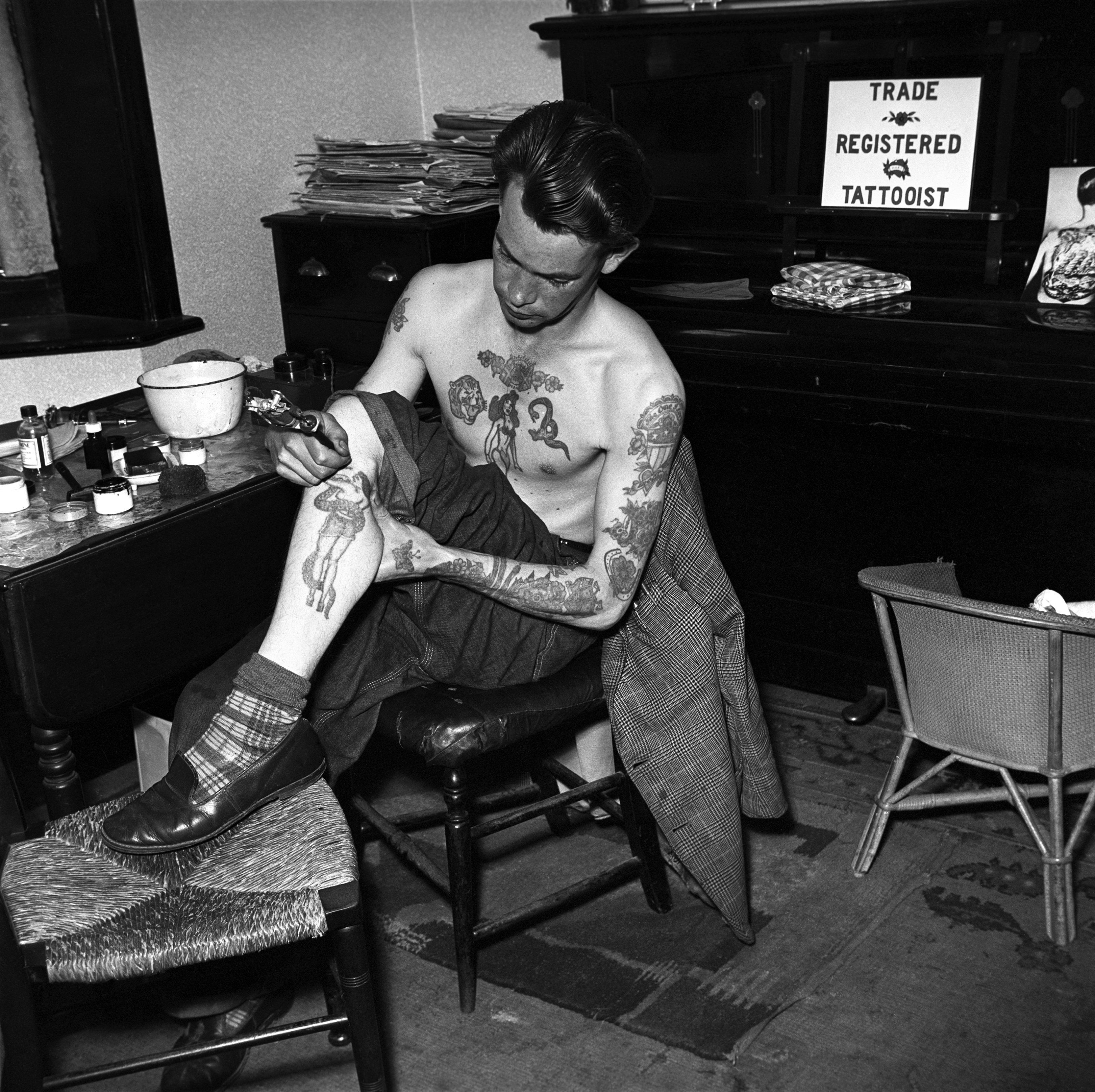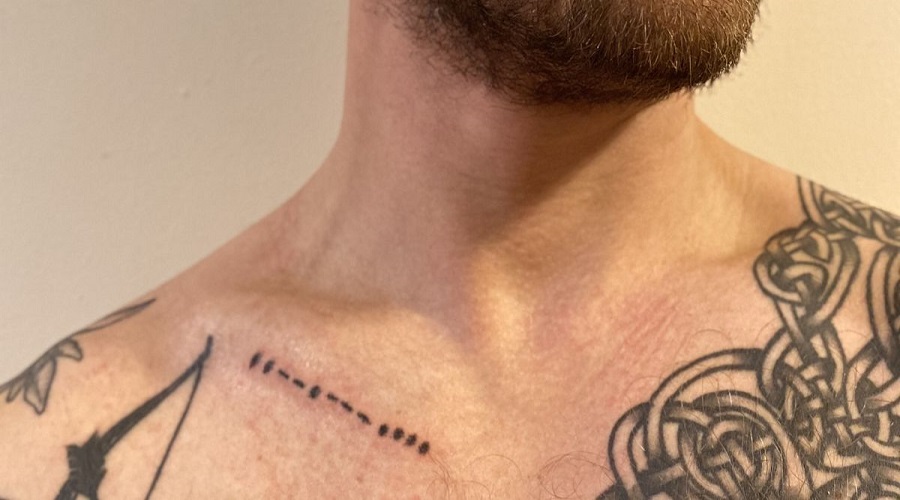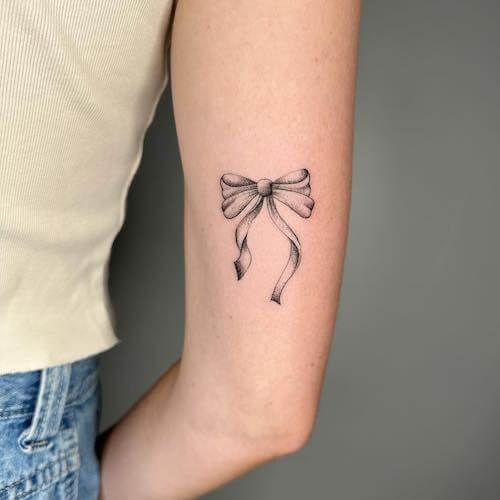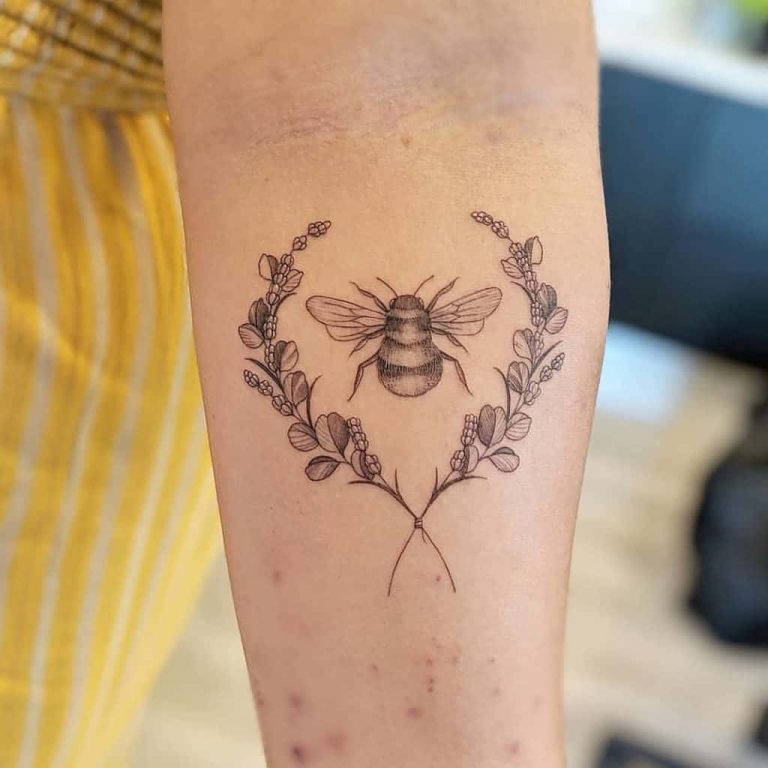You will need some supplies before you start tattooing yourself. These include sterile needles, sanitized ink, and a clean work surface. It is also important to have someone else around to help you with the process.
Start by sterilizing the area where you will be working. This can be done by using rubbing alcohol or another antiseptic solution. Next, choose the design that you want to tattoo onto yourself.
It is important to make sure that the design is something that you are comfortable with and that it is placed in an area that can be easily covered if needed.
Once you have your design ready, begin tracing it onto your skin with a needle. It is important to go slowly and carefully so that you do not make any mistakes.
Once the outline is complete, start filling in the tattoo with ink. Again, take your time and be careful not to make any mistakes.
After the tattoo is complete, apply a bandage or wrap to protect it while it heals.
Be sure to follow all aftercare instructions given to you by your artist in order to avoid infection or other complications.
- Decide on the placement of your tattoo
- This is a very important step, as you’ll need to determine how big or small your tattoo will be and where it will be placed on your body
- Choose the design of your tattoo
- There are endless possibilities when it comes to tattoo designs, so take some time to browse through various images online or in magazines to get an idea of what you want
- sterilize all of your supplies
- This includes the needle, ink, and any other tools you’ll be using
- It’s crucial that everything is sterile in order to avoid infection
- Sketch out the design onto your skin with a sharpie marker, starting with light lines that can be erased later if need be
- Once you’re happy with the placement and size of the design, go over it with heavier lines that will serve as guidelines for when you start tattooing yourself
- 5 dip the needle into the ink and begin tracing over the lines you’ve drawn on yourself
- Start slowly and carefully, making sure that each line is even and consistent before moving onto the next one
- Remember that tattoos are permanent, so take your time!
Tattooing Yourself For Beginners
Is It Hard to Tattoo Your Self?
Yes, it is hard to tattoo yourself. It’s not impossible, but it is definitely more difficult than getting someone else to do it for you. There are a few things that make self-tattooing more challenging:
1) You can’t see what you’re doing. This means that it’s easy to make mistakes and end up with a wonky tattoo.
2) It’s hard to reach all the parts of your body that you want to tattoo.
If you’re trying to do a large tattoo, it will be very difficult to reach all the areas evenly.
3) Tattooing yourself is painful! Since you’re essentially stabbing yourself with a needle over and over again, it’s going to hurt way more than if someone else was doing it.
How Can I Give Myself a Tattoo at Home?
It is not recommended that you give yourself a tattoo at home. There are many risks involved in doing so, including infection, scarring, and uneven lines. If you are determined to give yourself a tattoo, make sure to sterilize all of your equipment beforehand and follow these steps:
1. Choose a design and placement for your tattoo. Keep in mind that it will be permanent and think about how the location will affect the healing process.
2. Sketch the design onto tracing paper or print it out if you’re using a pre-made image.
Place the tracing paper over the chosen area and use a pen or marker to outline the design onto your skin.
3. Get all of your supplies ready before starting the tattooing process. This includes sterile needles, ink, gloves, Vaseline (to lubricate the skin), cotton balls or gauze (to soak up excess ink), and disinfectant wipes (for cleaning the area afterwards).
4. Fill a cup with boiling water and place your needles in it for several minutes to sterilize them. Boil water ahead of time so that it’s ready when you need it – do not reuse water that has already been boiled!
5. Take everything out to your work space and set it up so that you have easy access to everything you’ll need during the tattooing process.
Make sure your work surface is clean and sanitized before beginning.
6) Pour some ink into a disposable cup – only use as much as you think you’ll need for the tattoo since unused ink can harbor bacteria (plus, most people end up needing less ink than they expect). Use a sterile cotton swab or gauze pad to apply Vaseline to the surrounding skin – this will help reduce irritation during the tattooing process by creating a barrier between your skin and the needle/ink .7) It’s finally time to start tattooing!
Dip your needle into the ink cup – make sure there’s enough on there but don’t overload it – then begin tracing over your stenciled design on your skin .8) Continue going over the lines until they’re nice and dark .9) Once you’re finished, wipe away any excess ink with disinfectant wipes then apply some more Vaseline to keep 10)the area moist while it heals .11) You did it!
How Do Beginners Start Tattooing?
If you’re thinking about getting a tattoo, you’re not alone. In fact, one in five U.S. adults has at least one tattoo, according to a Pew Research Center report. And while the number of people with tattoos is on the rise, so is the number of people who regret them.
If you’re considering making a permanent mark on your body, it’s important to do your research and make sure you’re making a decision you won’t later regret.
So, how does one go about starting to tattoo? Here are some things to consider:
1. Do your research.
Before you get inked, it’s important to do your homework and make sure you know what you’re getting yourself into. That means researching both the art of tattooing and the artist you’ve chosen to do the work.
Make sure you understand the risks involved in getting a tattoo and that you’re comfortable with them before moving forward. It’s also important to choose an experienced artist who specializes in the style of tattoo you want and who works in a clean environment. Don’t be afraid to ask questions or shop around until you find an artist that feels right for you.
2. Decide where on your body you want the tattoo placed.
This may seem like a no-brainer, but it’s worth giving some thought to where on your body you want your tattoo placed before going under the needle. Keep in mind that certain areas are more painful than others (think: bony areas like ankles or ribs), so if pain tolerance is low, opt for a spot that isn’t as sensitive .
You should also consider whether or not placement will affect future employment opportunities; many employers still have strict policies against visible tattoos . If there’s any chance placement could interfere with job prospects down the road , it might be worth reconsidering . Additionally , keep in mind that some places simply aren’t conducive to healing well (again , think: bony spots ), so avoid those if possible .
All these factors should be taken into consideration when deciding placement .
Do You Push Or Pull When Tattooing?
When tattooing, you should always pull the skin tight. This will help the needle move more smoothly and prevent it from dragging on the skin. Pushing too hard can cause the needle to break or bend, so be careful not to apply too much pressure.

Credit: nymag.com
How to Tattoo Yourself With a Pen
It’s not as difficult as you might think to tattoo yourself with a pen! Here are a few simple steps to follow:
1. Choose the design you want and print it out on paper.
If you’re not sure what design you want, browse through tattoo magazines or online galleries for inspiration.
2. Place the paper against your skin and use a pen or pencil to trace the outline of the design onto your skin.
3. Once the outline is complete, fill it in with ink using a sterile needle and needle bar (this can be purchased at most tattoo supply stores).
Start with a light layer of ink and build up to a darker shade if desired.
4. Allow the ink to dry completely before covering it with a bandage or wrap. Leave the wrap on for at least 24 hours before removing it so that the ink can set properly in your skin.
How to Tattoo Yourself Without a Gun
If you want to tattoo yourself without a gun, there are a few things you need to know. First, make sure you have the supplies you need: a sharp needle, some ink, and a good design. Second, clean your skin thoroughly-you don’t want any bacteria getting into your bloodstream!
Finally, start slow and be very careful. Use short strokes at first to get used to the sensation, and then go over them again with longer strokes once you’re comfortable. Don’t forget to sterilize everything when you’re done!
How to Tattoo Yourself With a Needle
If you’re looking for a unique and personal way to decorate your body, why not try tattooing yourself? It’s not as difficult as it may sound, and with a little practice you can create some amazing designs. Here’s how to do it:
1. gather your supplies. You’ll need a sharp needle, some ink (preferably black), and something to sterilize the needle with (alcohol or boiling water will work).
2. Choose your design.
This is the fun part! You can either come up with your own design, or find one online or in a tattoo magazine. Keep in mind that simple designs are often best for beginners.
3. Transfer the design onto your skin. Use a pen or pencil to trace the outline of the design onto your skin. Make sure the lines are light so they’re easy to see when you start tattooing.
4. Sterilize the needle and start tattooing! Dip the needle into the ink, then gently pierce your skin following along the lines of your design. Be careful not to go too deep – you don’t want to puncture any major blood vessels!
If you find it difficult to hold the needle steady, you can tape it onto a pencil or chopstick for better control.
Conclusion
If you’re considering a tattoo, why not go the DIY route and give yourself a tattoo? It’s cheaper and more personal than going to a professional. Plus, it can be a fun experience!
Here’s how to do it:
1. Choose your design. This is probably the most important step.
You want to make sure you pick something you’ll love for years to come. Spend some time browsing designs online or in magazines before making your final decision.
2. Gather your supplies.
Once you have your design picked out, you’ll need some supplies. You’ll need sterile needles (you can find these at a beauty supply store), ink (also available at a beauty supply store), and Something to draw your design on (tracing paper works well).
3. sterilize your equipment .
This is an important step to avoid infection. Use rubbing alcohol or boiling water to sterilize your needles and anything else that will come into contact with your skin.
4 .
Draw your design on tracing paper . This will help you transfer the design onto your skin later on . 5 Find a friend to help .
It’s always best to have someone else around when doing something like this , just in case something goes wrong . 6 numbs Your Skin . Before you start tattooing yourself , you’ll want to numb the area where the needle will be going in . There are special creams available for this purpose , or you can use ice cubes wrapped in cloth . 7 Start Tattooing ! Now it’s time for the fun part! Begin by dipping your needle in ink and then gently pressing it into your skin following the lines of your design . Don’t press too hard -you don’t want to go too deep and risk damaging yourself !




